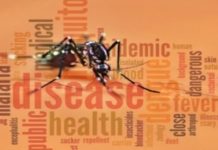Our planet’s atmosphere consists of numerous bacteria. In fact they are supposed to be one of the first living organisms to be formed in water. But until recently it was never imagined that the living bacteria could be present even at an altitude of 30,000 feet. In the midst of airborne sea salt and dust, researchers unexpectedly found thousands of living fungal cells and bacteria, including E. coli and Streptococcus. According to Popular Science Magazine July 2013 Issue, this discovery was made last winter in 2012.
Earth’s upper atmosphere—below freezing, nearly without oxygen, flooded by UV radiation-is no place to live. Scientists from the Georgia Institute of Technology discovered that billions of bacteria actually thrive up there. Expecting only a smattering of microorganisms, the researchers flew six miles above Earth’s surface in a NASA jet plane. There, they pumped outside air through a filter to collect particles. Back on the ground, they tallied the organisms, and the count was staggering: 20 percent of what they had assumed to be just dust or other particles was alive. Earth, it seems, is surrounded by a bubble of bacteria.
Scientists don’t yet know what the bacteria are doing up there, but they may be essential to how the atmosphere functions, says Kostas Konstantinidis, an environmental microbiologist on the Georgia Tech team. For example, they could be responsible for recycling nutrients in the atmosphere, like they do on Earth. And similar to other particles, they could influence weather patterns by helping clouds form. However, they also may be transmitting diseases from one side of the globe to the other. The researchers found E. coli in their samples (which they think hurricanes lifted from cities), and they plan to investigate whether plagues are raining down on us. If we can find out more about the role of bacteria in the atmosphere, says Ann Womack, a microbial ecologist at the University of Oregon, scientists could even fight climate change by engineering the bacteria to break down greenhouse gases into other, less harmful compounds.
This is a breakthrough in the science field not just because of its uniqueness, but also because it could help the medical science figure out certain air-borne diseases which may still not have reached levels at which we are staying.




































See GeoengineeringWatch.Org for answers. NASA pretends it doesn’t know, but it knows. The aerosols sprayed contain chemicals, pathogens and dried blood cells. This is actually happening. Please investigate.